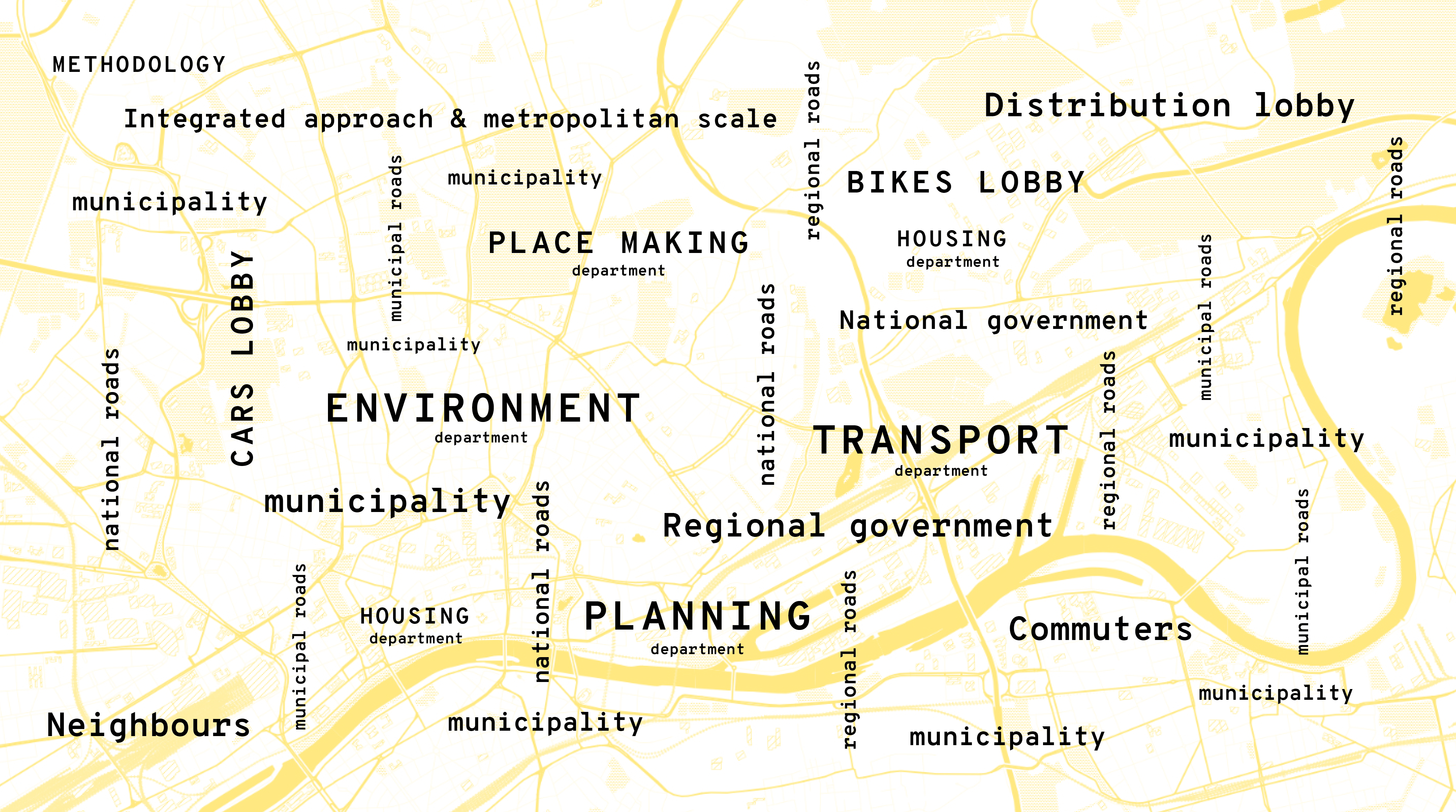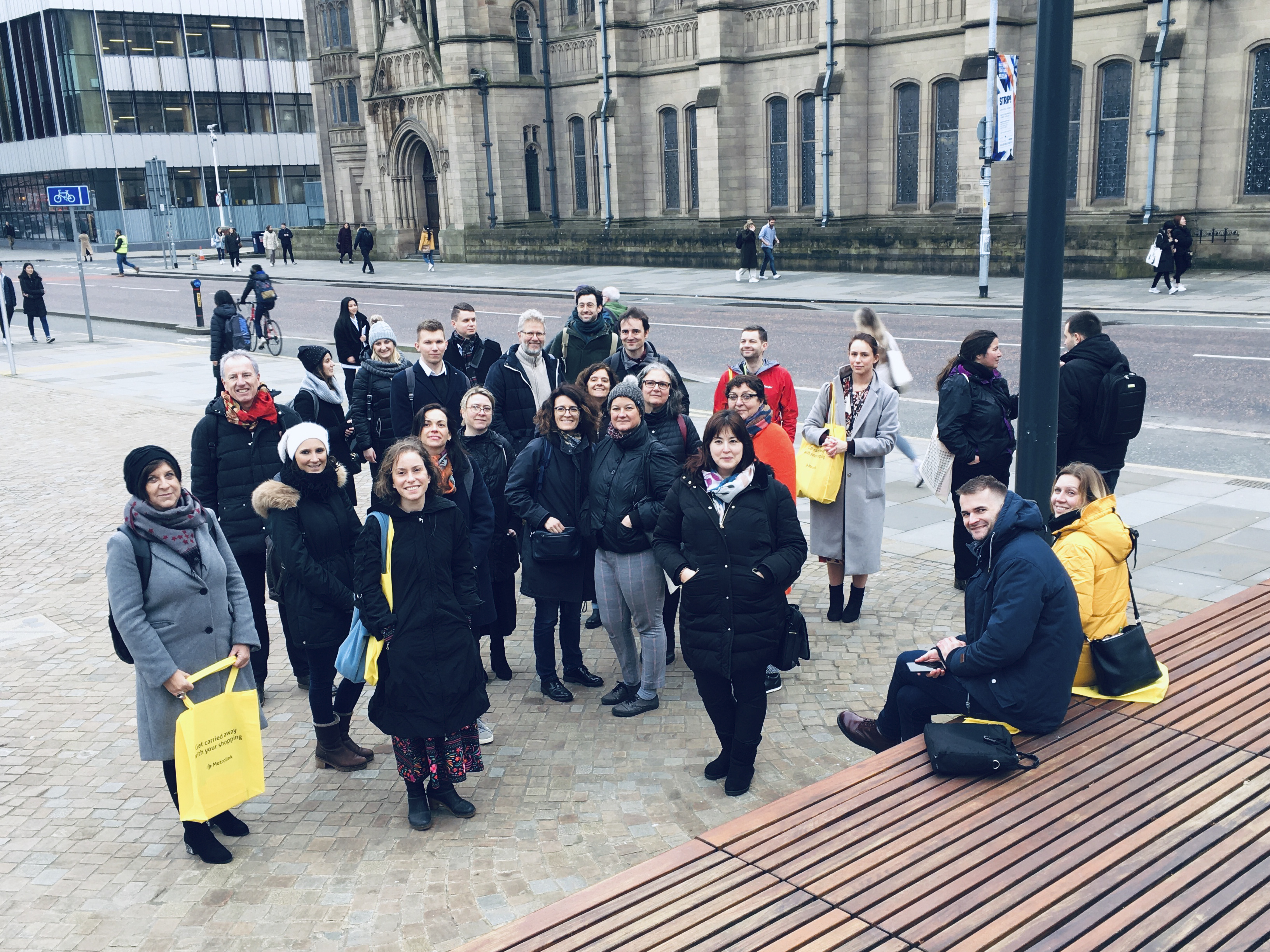Seeing rethinking infrastructure as an opportunity
Edited on
22 February 2021Infrastructure needs to take care not only about its efficiency, but also about its relationship and impact on surrounding communities and territories. In doing so, great chances for sustainable urban development can arise, and RiConnect aims to seize such opportunities by gathering diverse stakeholders and assessing interventions

For many years, mobility infrastructure was built to solve mobility problems as efficiently as possible. With the invention of trains and more significantly, automobiles, these demands have become increasingly specific and infrastructure design has become more self-centred (focusing on increasing speed, comfort levels, capacity, safety, etc.) while at the same time, decreasingly taking into account the territory supporting it. This disparity between infrastructure and territory has created urban barriers, open space disconnections, low quality urban spaces, social segregation, and other issues.
However, the same infrastructure that has caused these problems can also be part of the solution. There is tremendous potential in rethinking mobility infrastructure. Mobility infrastructures are mostly built in public land, they are continuous elements that cross urban and open environments, their dimensions are enormous, can be ductile to integrate other requirements, their surroundings are normally not as consolidated as the central city, among others.
In European metropolitan areas, these infrastructures are concentrated in the 20th century fringe as well as the suburbs. This is primarily due to two reasons: in most European cities, the great expansion of mobility infrastructure took place during this period and the infrastructure located in main metropolitan city centres are already integrated. The twentieth century’s urban fabric has a great deal of potential: due to the twentieth century configuration, a new type of urbanity may be allocated, with potential for new housing, workplace, amenity, and public space configurations. There is more space for green areas linked easily to natural networks. Indeed, these are the most suitable places for allocating growth. Rethinking infrastructure may lead to a fresh mix of high quality developments with new housing, industrial areas and economic centres, workplaces, open spaces, amenities and public facility typologies and configurations. This should help decentralise the metropolis, reducing the number of commuters to the inner city. In other words, “short distance metropolises” will be created. These new developments will not only enhance local quality of life, but also balance local necessities and, along with infrastructure integration, create a chain reaction for urban regeneration.
The infrastructure’s physical features may facilitate the implementation of new metabolic requirements. Water treatment, ecosystem services, and energy production are just a few examples. These are demands that not only compensate infrastructure externalities but help to achieve a more sustainable, equitable, and attractive metropolis.

An integrated and participative approach. A process-oriented network
Due to large-scale mobility infrastructure (usually greater than municipal borders), metropolitan areas must take the lead with this task. RiConnect acknowledges this challenge and proposes a network of metropolitan areas and transport authorities with a supralocal perspective. These would share the same objectives while each partner enriches strategies and actions, contributing their own specific spatial, legal, economic and historical context and overall experience.
Due to the huge complexity of these areas with different territories, multiple tiers of administration, stakeholders, interests and dependencies, the most feasible option for rethinking mobility infrastructure and its territory is through an integrated and participated approach involving all stakeholders. The traditional approach, where cities tend to face these challenges in a segmented manner (separated departments of transport, planning, housing, environment, place making, etc.) approving segmented plans, has been proof of its limited success.
The participative approach will be carried out by setting up URBACT local groups consisting in representatives of social, economic, and environmental sectors (city staff, NGOs, SMEs, universities, citizens, and other stakeholders). Their common objective is to find solutions for the needs and local challenges for which partner cities are involved in the network, issues associated to stakeholder’s engagement, maintaining their involvement and organising joint decision-making throughout the entire delivery process of integrated action plans.
This integrated approach requires a new approach to funding. There is a 1 trillion dollar global infrastructure-funding gap with 3.3 annual global demand. This network will explore ways of directly increasing public budget to fund infrastructure transformation projects through EU and national funding as well as local/metropolitan revenue (project-related revenue, pricing measures for automobile use, development charges and value capture) and external funding (municipal and green bonds). Taking into account the fact that this is a holistic approach, it is worthwhile to note that funding the mobility transformation will lead to future savings on healthcare, social services, security, services, and productivity.
The RiConnect network’s process is therefore emphasised. Small Scale Actions (SSA) will also play a role in order to confirm some strategies and their financial impact. The successfully implementation of this process is more important than pushing forward mobility and urban planning that will never be realised or used in the intended way. This involves new efficient and equitable mobility paradigms, developing placemaking design principles to make the metropolis more attractive while adding value via its cultural heritage, developing spatial planning solutions to boost regeneration, balance the metropolis and allocate growth and housing and finally, introducing new ecosystem functions for an improved environment. In short, do more with less... with a sole vision: develop more dynamic, sustainable, equitable and attractive metropolises where everyone can interact with each other and move about freely, regardless of age, social status and where they live.
The RiConnect Chronicles 02: Final Meeting Phase 1 As stated in the article, the process to follow in the RiConnect project focuses on having an integrated approach to infrastructure integration projects and involving all stakeholders, and it makes the most of small-scale actions to do so. Discussions on how to approach the project process were covered at the RiConnect Transnational Meeting 2, celebrated in Manchester in January 2020 as the Final Meeting of Phase 1. A summary of the discussion is available at The RiConnect Chronicles 02, a record of events in the order in which they occurred, to highlight the most relevant ideas to the topic dealt with during this meeting. |
 Submitted by Stela Salinas on
Submitted by Stela Salinas on

